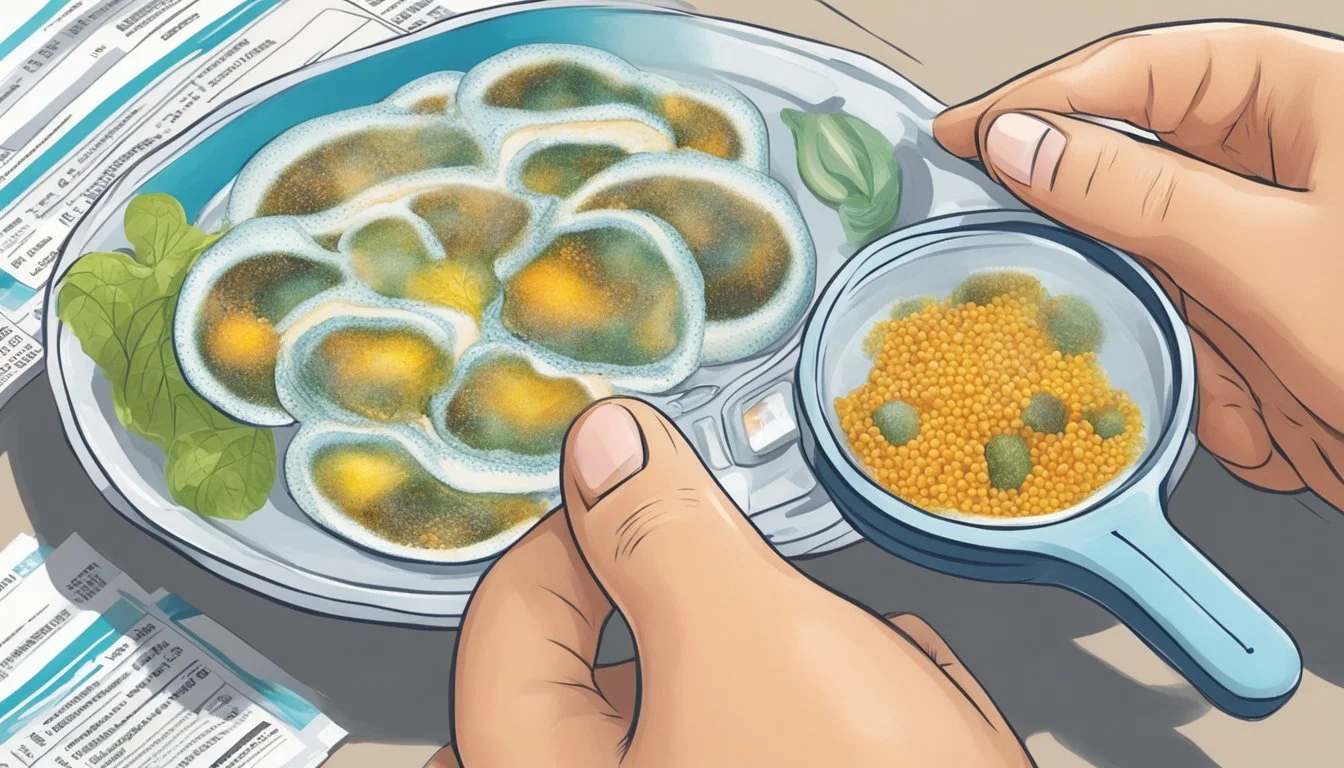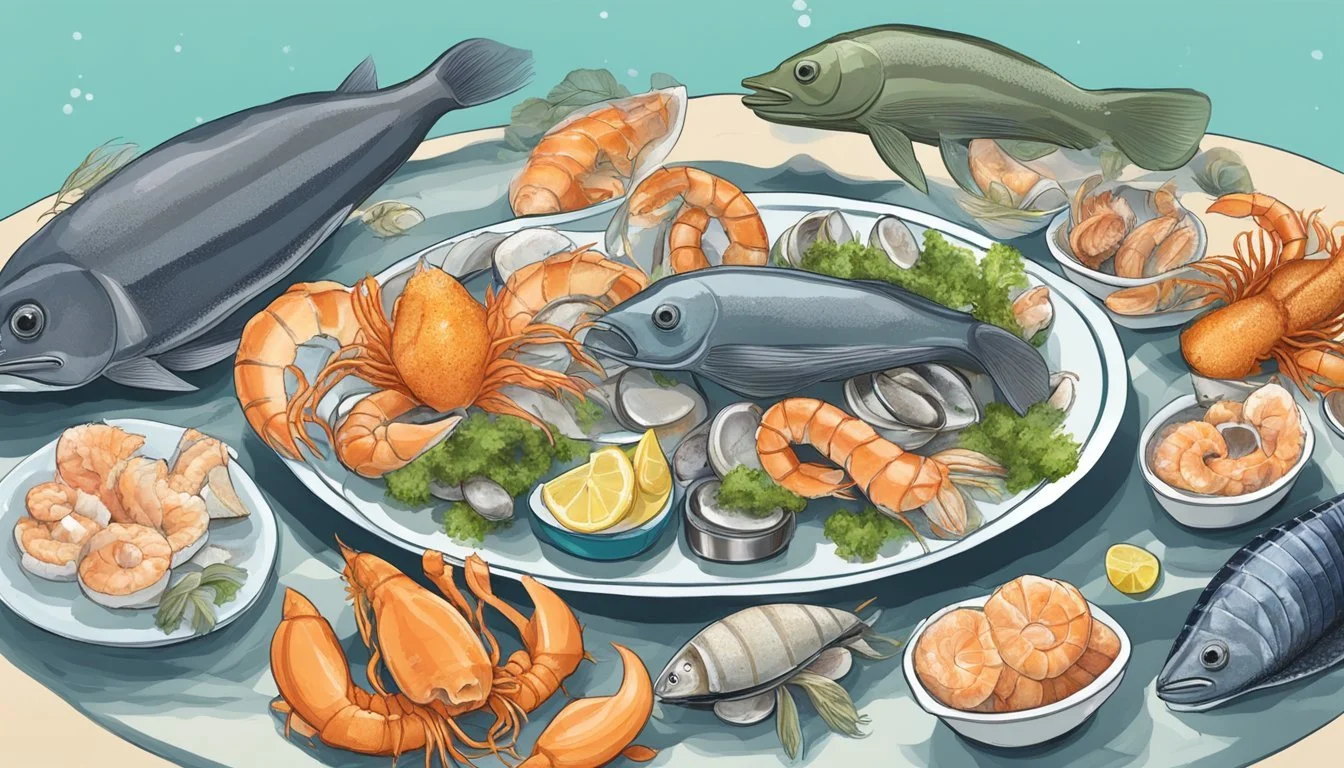Can Diabetics Eat Sea Squirts? Health Insights and Nutritional Information
Sea squirts, also known as tunicates, might not be a common item on your supermarket list, but they have a unique place in the diet of some cultures. For diabetics, managing blood sugar levels and maintaining a balanced diet is crucial. Yes, diabetics can eat sea squirts, as they are low in calories and carbohydrates, making them a suitable option for people with diabetes.
Sea squirts are not only low in carbohydrates but also a good source of essential nutrients like iodine, which supports thyroid function. Their consumption can fit well within a diabetic diet, helping to meet nutritional needs without causing significant spikes in blood sugar levels. This makes sea squirts a viable and healthful addition to a diabetes-friendly diet plan.
Moreover, including diverse and nutritious foods is key to managing diabetes effectively. The incorporation of unusual but nutritious options like sea squirts can lead to a more varied and enjoyable eating experience. This approach not only supports health goals but also keeps meal times interesting and satisfying.
Understanding Diabetes and Nutrition
Effective diabetes management involves careful dietary choices that can help regulate blood sugar levels and improve overall health. Specific nutrients and food patterns play critical roles in managing diabetes.
Role of Diet in Diabetes Management
Diet plays a significant role in managing diabetes. Foods rich in non-starchy vegetables, healthy fats, and proteins can help stabilize blood sugar levels.
Reducing carbohydrate intake to 26-45% of total calories is often recommended. Low-carb diets can help manage blood sugar by reducing glucose spikes.
It is essential to choose carbohydrates with a low glycemic index, as they cause slower, more gradual increases in blood glucose. Foods with a high glycemic index can lead to sudden spikes in blood sugar, creating challenges for individuals with diabetes.
For proteins, options like meat, poultry, and seafood are beneficial. Seafood, such as salmon and sardines, provides low-fat protein and other essential nutrients that aid in improving insulin sensitivity.
Importance of Omega-3 Fatty Acids
Omega-3 fatty acids are vital for individuals with diabetes. These healthy fats are found in foods like seafood and certain nuts and seeds.
Omega-3s help improve insulin sensitivity, which allows the body to use insulin more efficiently and maintain stable blood sugar levels. This can reduce the risk of insulin resistance.
Additionally, omega-3 fatty acids have anti-inflammatory properties that can benefit overall cardiovascular health—an important consideration, as individuals with diabetes are at higher risk of heart diseases.
The inclusion of omega-3s in a diabetes diet can help manage symptoms and improve long-term health outcomes by supporting better glucose metabolism.
Sea Squirts: Nutritional Profile
Sea squirts are unique marine organisms known for their nutritional benefits. They are packed with essential nutrients, including proteins and omega-3 fatty acids, making them a valuable addition to the diet, especially for diabetics looking for nutritious food options.
Protein and Essential Nutrients
Sea squirts are a good source of protein. They provide essential amino acids, which are the building blocks of proteins. This high protein content aids in tissue repair and muscle building. For diabetics, proteins are crucial as they have minimal impact on blood glucose levels.
In addition to protein, sea squirts contain important vitamins and minerals. These include vitamin B12, which is vital for nerve function and the production of red blood cells, and selenium, an antioxidant that helps prevent cellular damage. They are low in cholesterol, making them heart-friendly as well.
Omega-3 Fatty Acids Content
Sea squirts are rich in omega-3 fatty acids, specifically EPA (eicosapentaenoic acid) and DHA (docosahexaenoic acid). These fatty acids are known for their anti-inflammatory properties and support of heart and brain health. For diabetics, incorporating omega-3 fatty acids can help manage blood lipid levels and reduce the risk of cardiovascular complications.
Unlike other marine sources, sea squirts provide a significant amount of ALA (alpha-linolenic acid), a plant-based omega-3 fatty acid that complements EPA and DHA. This combination contributes to overall well-being, making sea squirts a beneficial dietary component for managing diabetes.
By understanding the nutritional profile of sea squirts, diabetics can make informed decisions about including this marine organism in their diet for its protein and omega-3 content.
Benefits of Sea Squirts for Diabetics
Sea squirts, a type of marine organism, offer various health benefits that could be particularly advantageous for individuals with diabetes. These benefits notably include improved blood sugar control and cardiovascular health.
Impact on Blood Sugar Control
Sea squirts may aid in controlling blood sugar levels. Rich in glucose tolerance factor (GTF), they could help in enhancing the body's insulin activity. Improved insulin sensitivity results in better glucose metabolism, which is crucial for diabetics.
Sea squirts also contain beneficial amino acids and peptides. These components are involved in various metabolic pathways, potentially aiding in more stable blood sugar levels. Including sea squirts in a diabetic diet could thus help manage blood glucose.
Cardiovascular Health Advantages
Diabetics often face an increased risk of heart disease. Sea squirts can benefit cardiovascular health by lowering LDL cholesterol and triglycerides. Their fatty acid profile, rich in omega-3s, helps reduce inflammation, which is a contributing factor to heart disease.
Moreover, the bioactive compounds in sea squirts can help in reducing blood pressure. Elevated blood pressure is a common issue among diabetics, and managing it is essential. By promoting cardiovascular markers like improved lipid profiles, sea squirts contribute to better heart health.
Comparing Sea Squirts with Other Seafoods
When considering the dietary options for diabetics, it's important to compare the nutritional benefits of sea squirts with other popular seafood choices. The following sections highlight these comparisons.
Seafood Varieties and Diabetes Risk
Fish like salmon, mackerel, trout, and sardines are praised for their omega-3 fatty acids. These fats are linked to improved insulin sensitivity and glucose metabolism, beneficial for diabetics.
Shellfish such as shrimp, crab, and lobster provide lean protein, helping maintain steady blood sugar levels.
Canned salmon offers convenience and the same health benefits as fresh fish. Sea squirts, though less known, also offer unique nutritional advantages.
Sea Squirts vs. Popular Seafood Choices
Sea squirts, also known as Ascidiacea, are low in fat and calories. They're packed with essential amino acids and vitamins, which can support overall health.
Salmon and tuna are rich in omega-3 fatty acids, crucial for heart health and glucose regulation. Trout and sardines provide similar benefits.
Compared to common fish, sea squirts have no notable mercury risk. This makes them a safer choice for regular consumption.
Sea squirts' fiber content aids digestion and helps regulate blood sugar. Fish options like cod and tilapia offer lean protein but lack the fiber that sea squirts provide.
Clearly, including sea squirts alongside other nutritious seafood can offer balanced dietary benefits for diabetics.
Safe Consumption Practices
Ensuring safe consumption of sea squirts is important for diabetics to manage blood sugar levels effectively without compromising on health benefits or taste.
Preparation and Cooking Methods
Sea squirts can be enjoyed in various ways to suit individual preferences. Fresh and raw preparations are popular, especially in sushi or thinly sliced with light seasoning. However, for those concerned about bacteria or digestion, cooking methods like steaming, boiling, or grilling are safer options.
Steaming helps retain moisture and nutrients.
Boiling ensures thorough cooking and reduces potential bacterial risks.
Grilling adds a unique flavor, but avoid excessive charring.
Frozen and canned sea squirts are options but check labels for added sugars or preservatives. Always rinse canned sea squirts to remove excess sodium.
Recommended Serving Sizes
Moderation is key to incorporating sea squirts into a diabetic-friendly diet. Recommended serving sizes ensure balance and avoid blood sugar spikes.
Fresh or frozen sea squirts: 3-4 ounces per serving.
Canned sea squirts: A standard can, typically 3-4 ounces, rinsed and drained.
Serve as part of a balanced meal, combining with vegetables, whole grains, or a lean protein like grilled fish or chicken.
This considerations aids diabetics in enjoying the nutritional benefits without adverse effects on blood sugar control.
Considerations and Potential Risks
When considering sea squirts in the diet of someone with diabetes, it is essential to evaluate potential health risks such as the presence of mercury and the likelihood of allergies or intolerances.
Mercury and Contaminants
Sea squirts, like many marine organisms, may accumulate mercury and other contaminants from their environment. High levels of mercury can pose health risks, particularly affecting the nervous system.
Consumption should be limited, especially if the sea squirts are sourced from areas with known contamination. Ensuring that sea squirts come from clean, monitored waters can help mitigate these risks. Regularly consuming various seafood known for lower mercury levels, such as salmon or sardines, can also balance dietary needs.
Maneuvering Allergies and Intolerances
Seafood allergies are a common concern and can result in severe allergic reactions. While sea squirts are less commonly allergenic compared to shellfish, individuals with existing seafood allergies should approach with caution.
Symptoms of a potential allergy include itching, swelling, and difficulty breathing. Consulting with a healthcare provider before introducing sea squirts into the diet is advisable. They may recommend a monitored approach or allergy testing to ensure safety.
Sea squirts might also cause digestive discomfort in some individuals, necessitating careful observation after consumption to identify any adverse effects promptly.
Integrating Sea Squirts into a Diabetic Diet
Including sea squirts in a diabetic diet can offer nutritional benefits and variety when combined with vegetables, nuts, and other balanced foods. When effectively planned, meals containing sea squirts can align with dietary recommendations from health organizations.
Meal Planning and Recipes
Sea squirts are versatile and can be included in salads or as a part of main dishes. When preparing a diabetic-friendly meal, it’s essential to pair sea squirts with high-fiber vegetables such as spinach, broccoli, and beans.
Recipe Idea: Sea Squirt Salad
Ingredients:
1 cup sea squirts
2 cups mixed greens (spinach, arugula)
1 avocado, sliced
1/2 cup cherry tomatoes
1/4 cup chopped nuts (almonds, walnuts)
1 tablespoon olive oil
Lemon juice, salt, and pepper to taste
Instructions:
Clean sea squirts thoroughly.
Toss together mixed greens, avocado, tomatoes, and nuts.
Add sea squirts.
Drizzle with olive oil and lemon juice.
Season with salt and pepper.
Balancing the Diet with Other Foods
Balancing sea squirts with other nutritious foods ensures a well-rounded diabetic diet. Incorporate lean proteins like tofu and fish, which are recommended by the American Diabetes Association, alongside sea squirts.
Sample Balanced Meal:
Main Course: Grilled sea squirts with sautéed broccoli and carrots.
Side Dish: Quinoa mixed with black beans.
Healthy Fat Addition: Sliced avocado and a handful of nuts.
Combining sea squirts with complex carbohydrates, fiber-rich vegetables, and healthy fats like those found in avocado, supports blood sugar management. This approach aligns with dietary practices endorsed by the American Heart Association to promote heart health.
Maintaining a balanced diet with a variety of foods can help manage diabetes effectively. Select meals that combine the unique benefits of sea squirts with well-rounded ingredients to ensure nutritional needs are met.








